What Do We DO (Dah)?
We all seem to know what those 3Ds stand for, right? but what about our clients Do they know what Do we Do when we offer our 3D Rendering Services to them?
Lets explore that topic a bit…
This question is something you should ask yourself about the clients you do not have yet. The ones you do, and keep coming back to you, obviously learned it by now.
I wonder though how was that learning experience for them, and you? Any chance you could have landed more clients and have better projects kickstart too?
Quality, Time and Money.
Translated to 3D your product should be Damn good-looking, Delivered on time and cost a Dollar.
(Really… just one dollar… or less).
Those 3 seem to play musical chairs and reorder depending on the client. You can shift your weight on these which ever way you like, but there really is a 4th Dimension we tend to neglect and that is of high importance to your future client…
one that might tip the balance in your favor come D-Day
The Forth Dimension
The Unknown.
Yep might seems odd to you, but who said clients know what we 3d geeks do. They should, and that is up to you!
I might be preaching to the choir here, since it just might be that all of you do share information about your 3d process with your clients. I do too.
But…
do you do this is as part of the sale process? and what and how do you share it with them?
I know I need to get better at this and thought about gathering some of the most interesting and effective examples out there for you to see (some probably created without this specific aim I mention here in mind, but relevant regardless of that).
Food for thought.
Starting with the most trivial approach of showcasing the complete 3d rendering process using 2d & 3d rendering tools… Saving the best ones for last 😉
First, two examples representing the 2d post-production of a 3d render approach.
Forest House Project Breakdown by Flying Architecture
A typical 2d post-production of a raw 3d render turned cool and informative with the addition of good music and subtle animation of the image layers and adjustments.
In Matus Nedecky’s words…
This is the personal project I did for my portfolio. The project contains design of the family house in the forest, in the dusk atmosphere. Movable aluminium shutters on the facade provide the privacy for the family living in there, so the house can be closed for the night, or when family is away on holidays.
Adding shutter position variation, initial viewpoint selection and slowing it down a bit could have made it an exemplar of this type of work process to any potential client.
Nysa 3D Visualization WIP by Rafal Barnas
I love Rafal’s work very much and it seems that helping clients understand what he does is seamless and preexistent in his work. This one is pretty straightforward in its approach, showing how the base render is transformed into the final result.
More from Rafal down below 😉
Second, the pure 3d approach department…
Eco House by The Neighbourhood
By The Neighbourhood, and based on the Eco House project, this video takes you all the way from initial CAD and viewpoint selection, through lighting, textures, materials, furnishings, post-production and up to the final still image result.
It is in bad need of a good soundtrack, but add that and a bit more flair…
HOY!!!
How to Make a Good 3D Rendering by Pure Render
Pure Render made this super cool, slick “How to Make a Good Rendering” video. Great soundtrack and animated elements showcasing the process of making a render. I especially like how they use the reference images prior to adding the 3d elements themselves to the scene… making the connection to an actual work process stage.
This one covers all the aspects of the 3d rendering process, but still lacks a connection to the people making the render and those getting it. 3d artists will get this one best, while clients might still be at a lost here and there.
And for the best ones…
Since they pack more information about the process and actually show the artist and artistry involved in the process. Striking, In my opinion, a better chord with any future client seeing these.
From Physical Scale Model to 3D Visualization by Rafal Barnas
This specific example, by Rafal, showcases a not so common approach of using a physical scale model as the base for creating the raw image that gets post produced and transforms into a stunning final still image.
The presence of the artist and the artistic merits of the process are well perceived. So is the process of making the image.
Short Architectural Presentation by Rafal Barnas
Yet another by Rafal, and the best one showcasing the making of a photo-matched rendering! Creatively done by the hands of the artist. Remarkable way to give that artistic aspect to the work.
Image Wizardry by Digital Mirage
Probably the most unusual, creative and cool showcase of the architectural visualization work process I stumbled upon was made by Digital Mirage studio. ‘Image Wizardry’ looks magical indeed and shows their potential clients what the process is and what to expect from start to finish in an extremely captivating way. less technical in content, shows the artists in action and their artistry, much more client oriented and emotive. Who wouldn’t want this team to do the work for them?
In their words…
Taking a different approach from our traditional style of production, we are trying to conceptualize wizardry into the way of making digital illustration. A lot of stop-motion was being used in this video, it’s very fun to work on this experimental piece of art.
I would love to hear from you what you think of this, and what you do (or plan to do) to help your clients understand what they are getting from you. See you in the comments below 😉












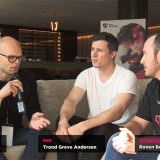
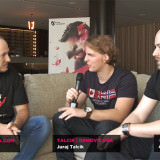
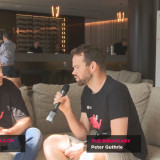
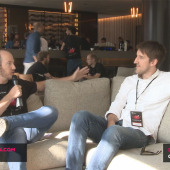
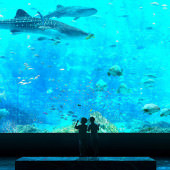
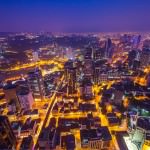
About 10 years ago I did an interior for one of the largest firms in Lebanon. I was given a huge plan of a hall with 4 walls. nothing else. I was told to design it. First thing i did was setup a camera inside these walls then I went to the client with my notebook to decide where he wants the camera. I later was told by employees that he told them he almost fainted when he saw the 4 walls with no details. They want fully detailed renderings in 1 day, so that they can change the design and have you redo the work the next day and so on. In the end we focused on a small corner of the huge hall. So I was right in not modelling the whole hall to discard most of my work later.
Another client cancelled the project and asked for a refund of the retainer after the first previews despite me warning her that the fist preview is just basic walls just to set the cameras. She claimed her husband changed his mind. But I know she did it because she didn’t understand it is an iterative process.
Other clients told me that natural disasters that delayed a project should never happen again as if I can control fire that took out a power plant where I live, others told me that they hesitate to hire me since I am a lone freelancer in case I die in the middle of the project. I heard so many depressing things I can write a top ten.
An uneducated client is a life sucking ghoul.
15 years doing this 12 hrs a day and it never gets easier to deal with clients just harder. Can’t wait for retirement.
As an employee since last years after 10 years of self employment, believe me being employed protects you from having to deal with crazies, especially if where you work management is caring for the employee is I have here.